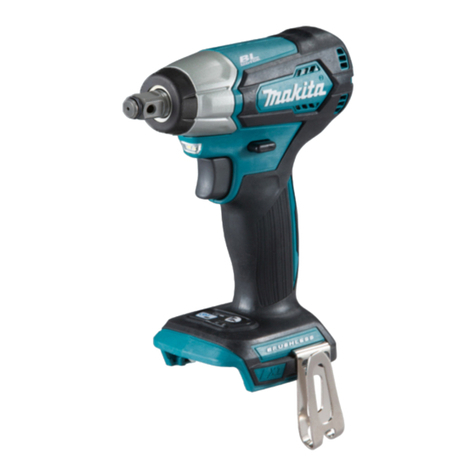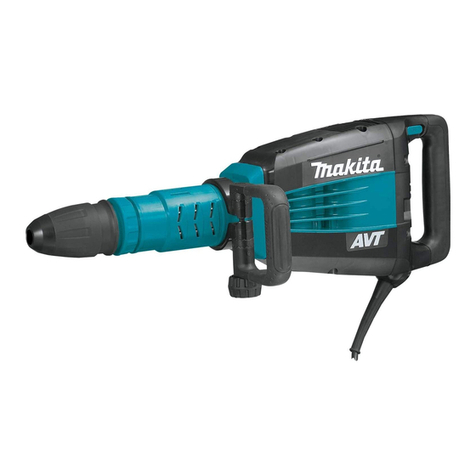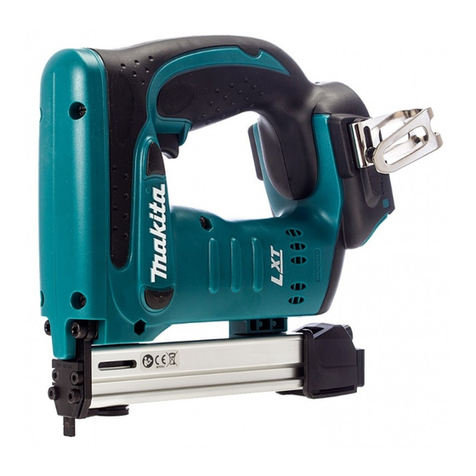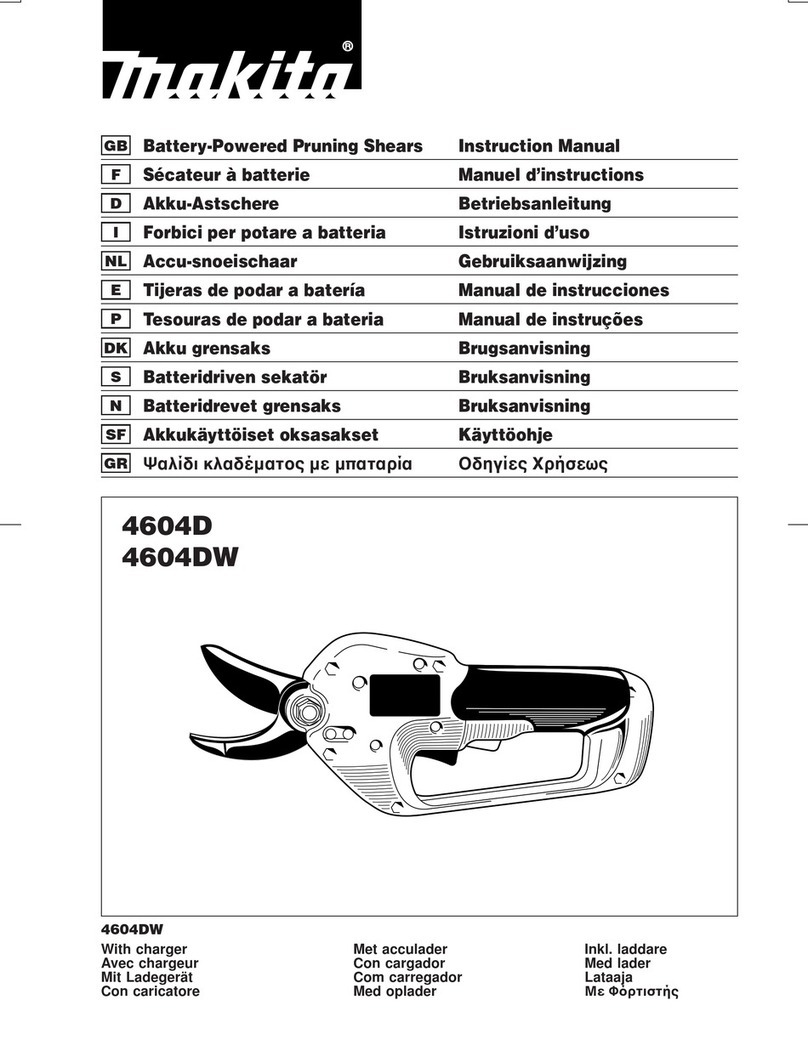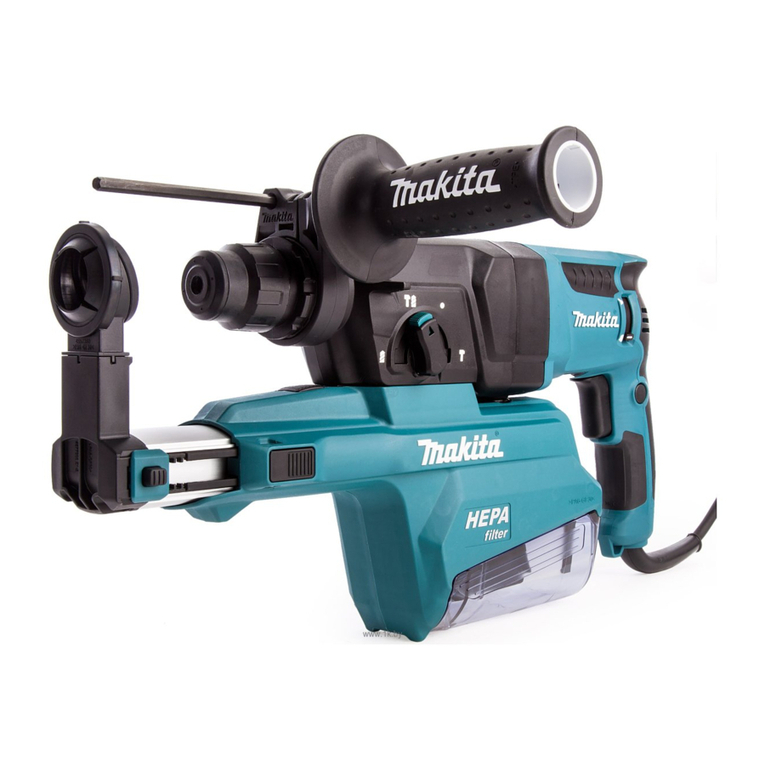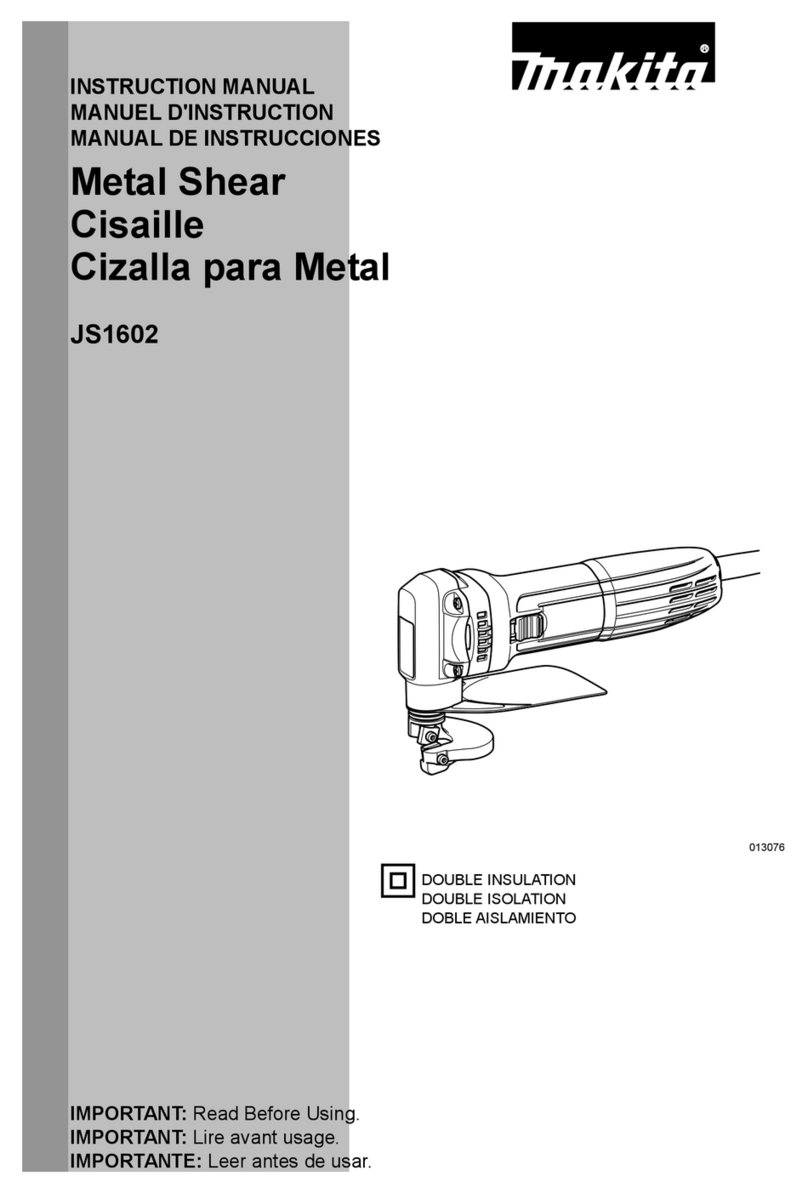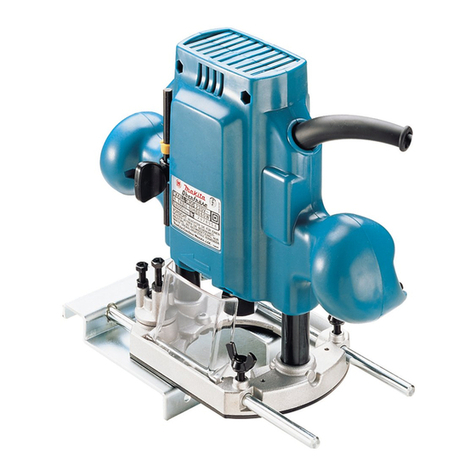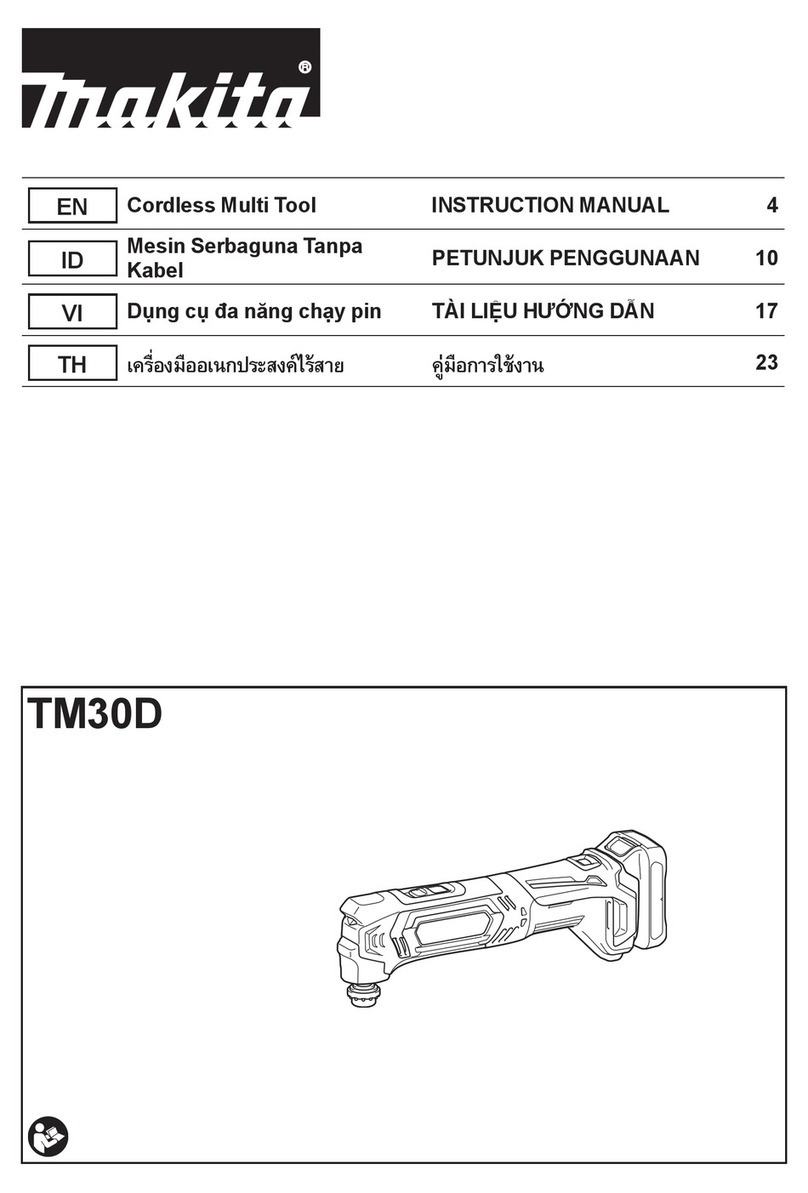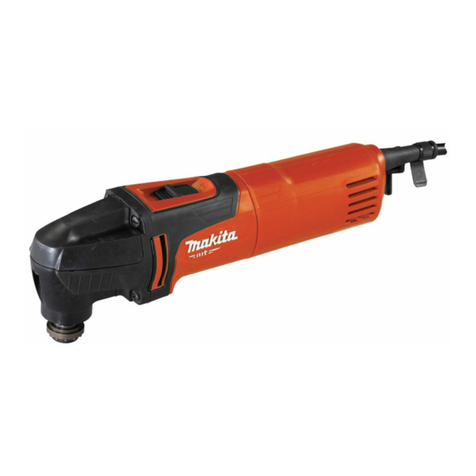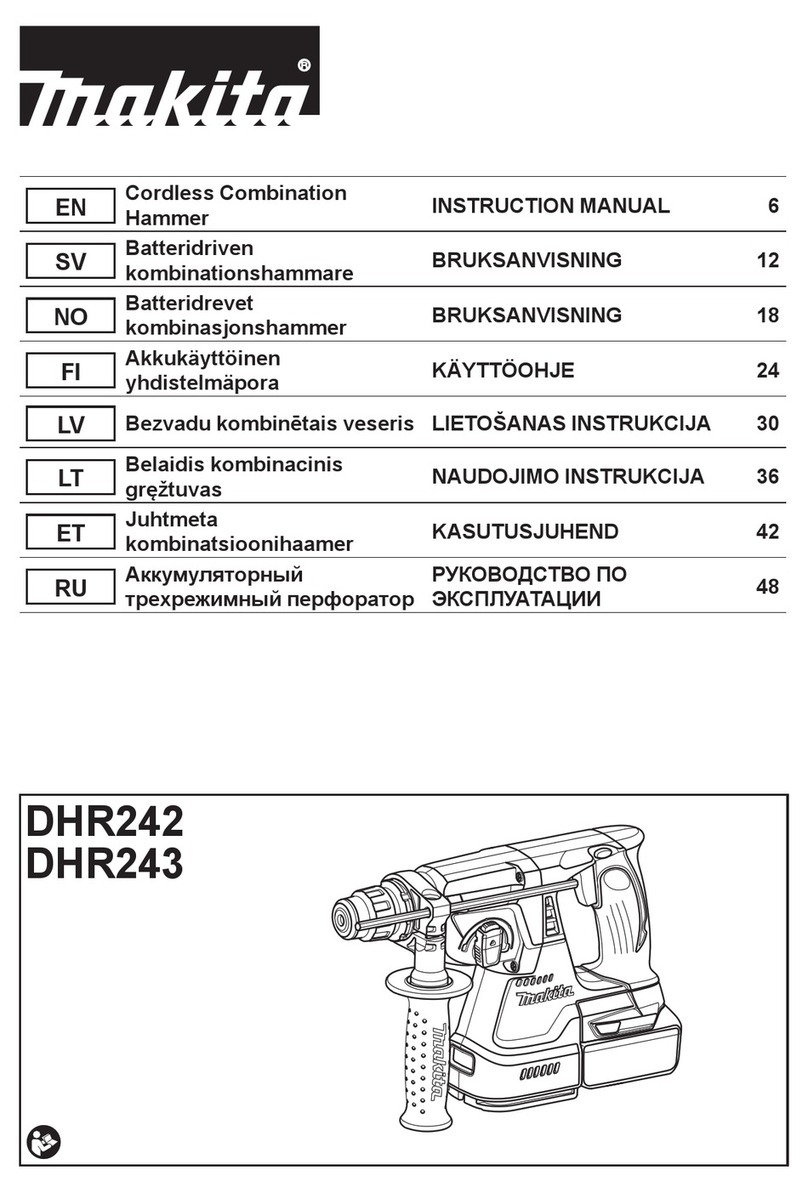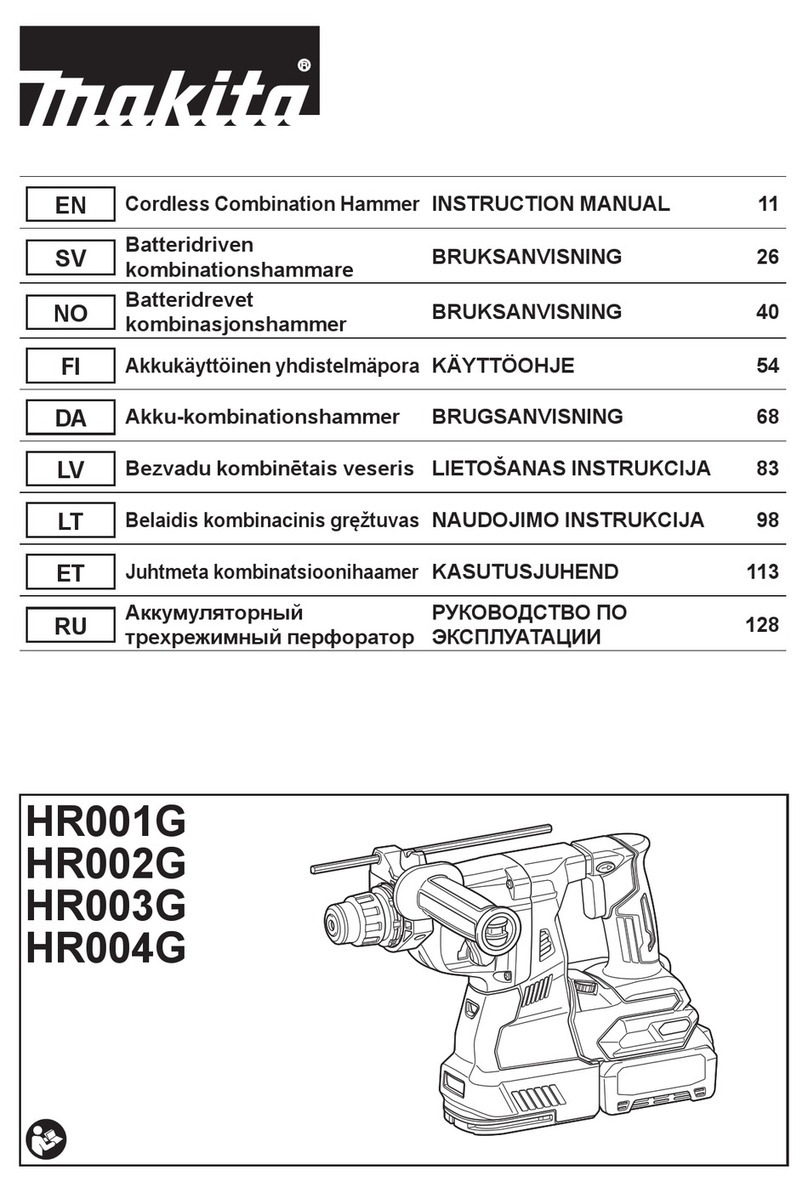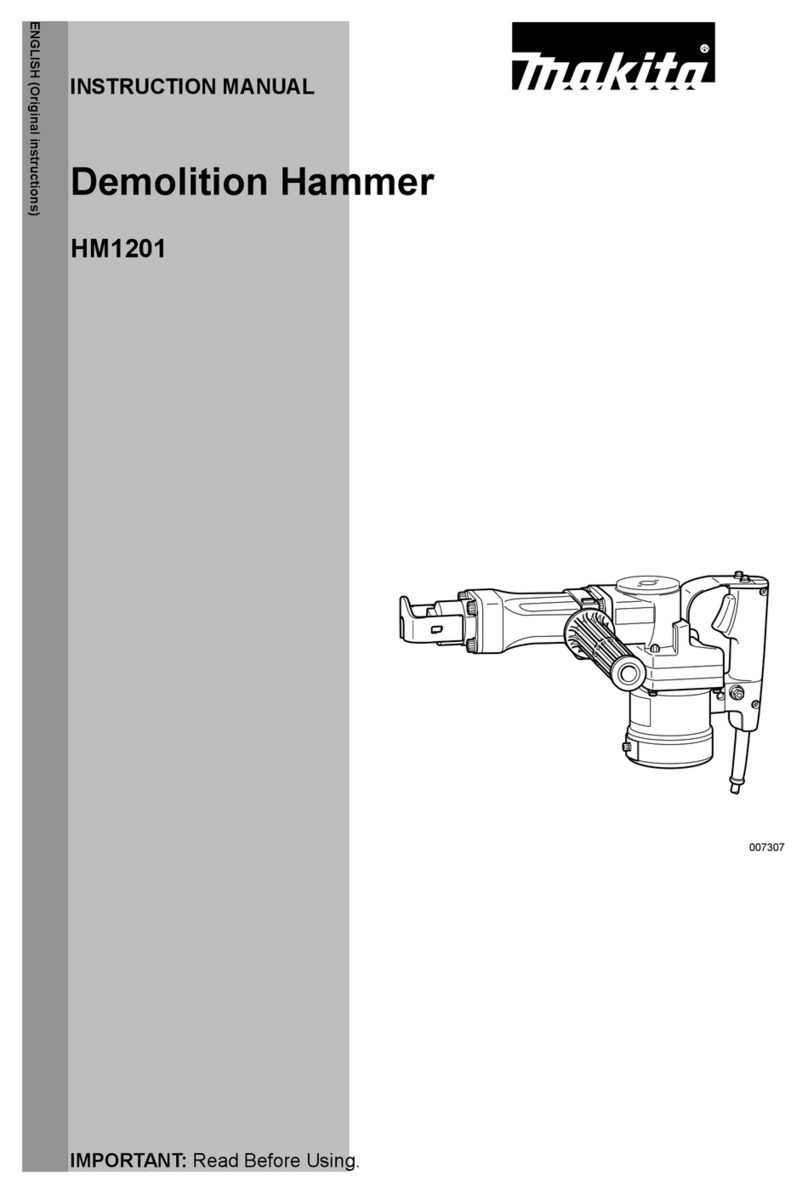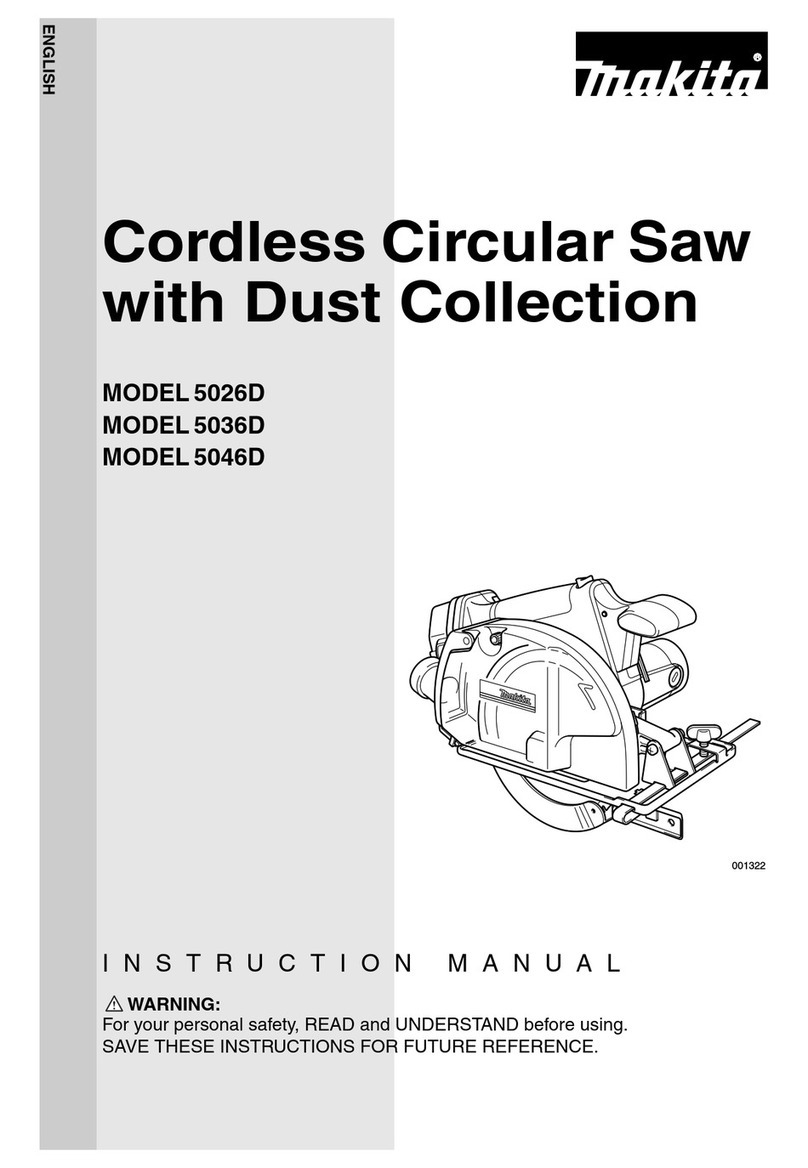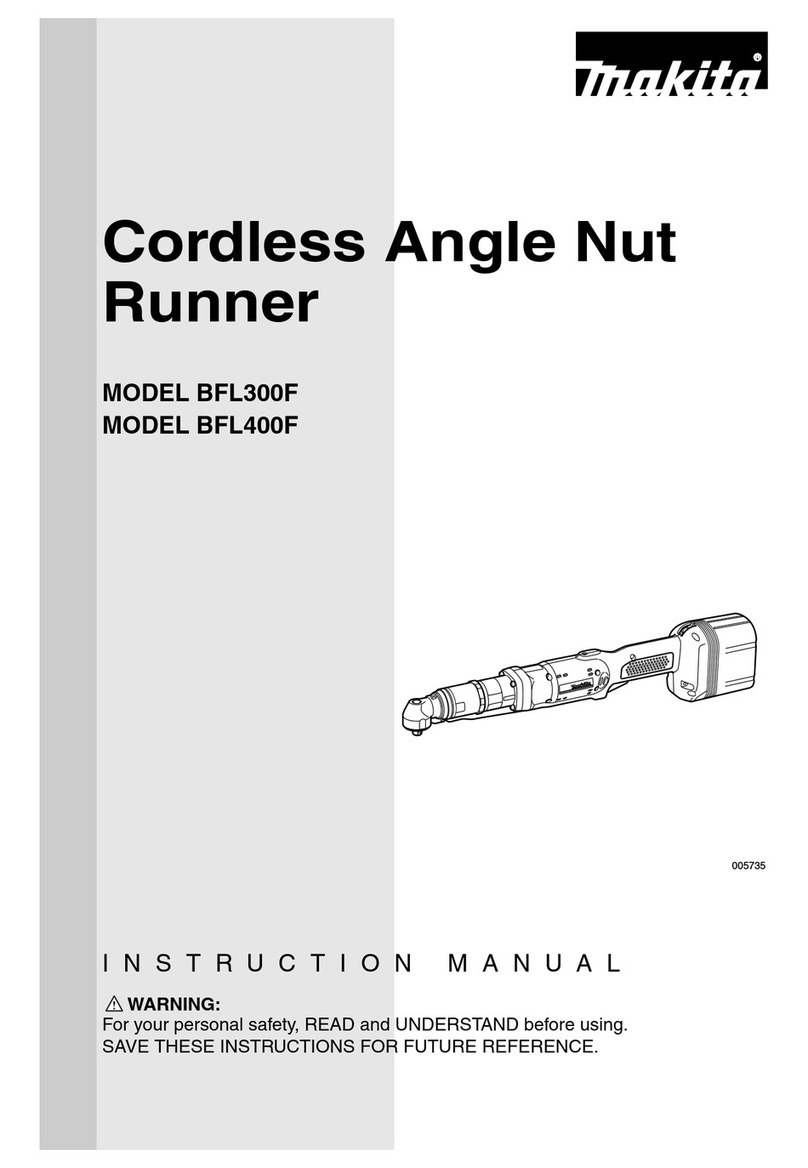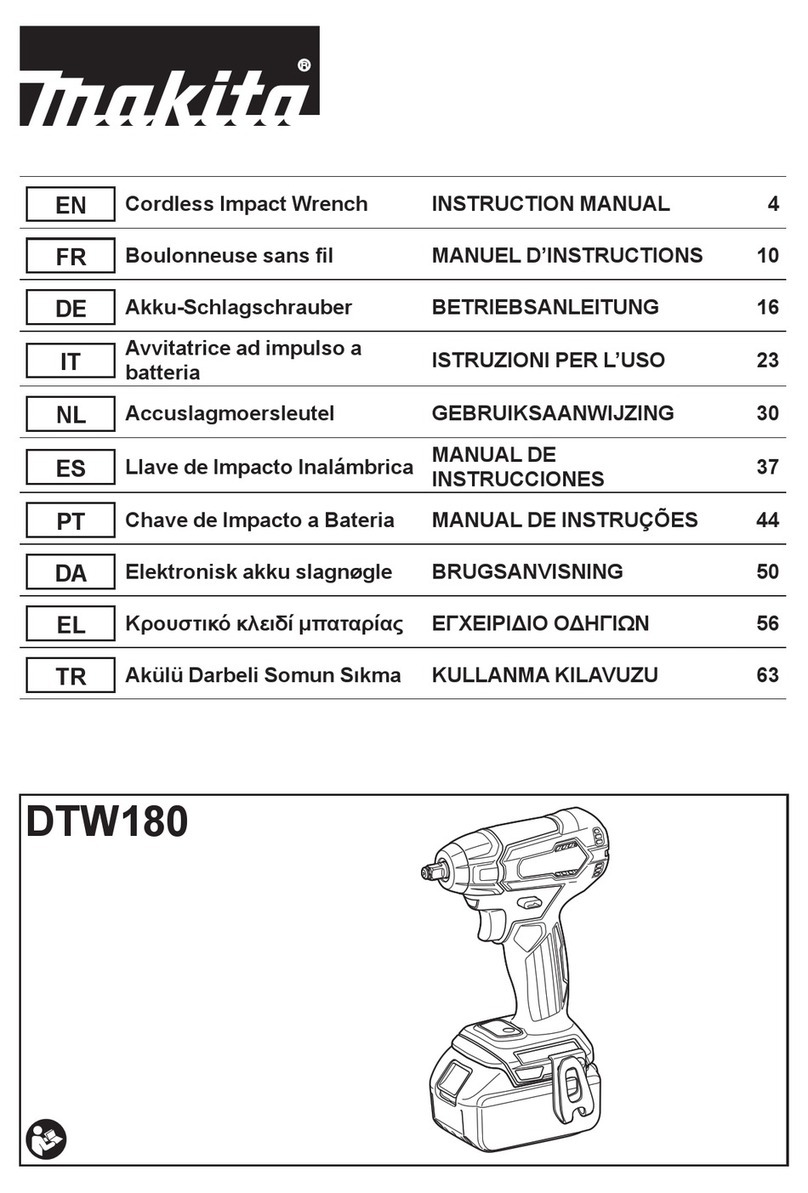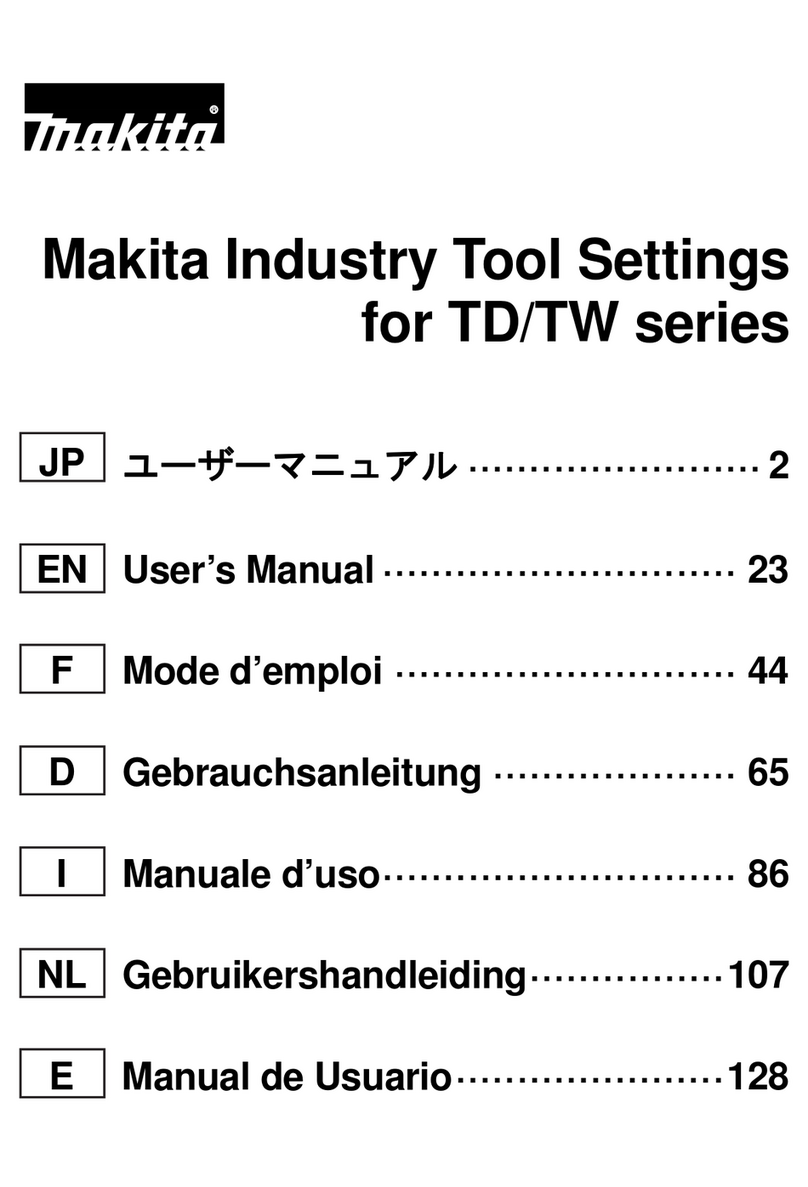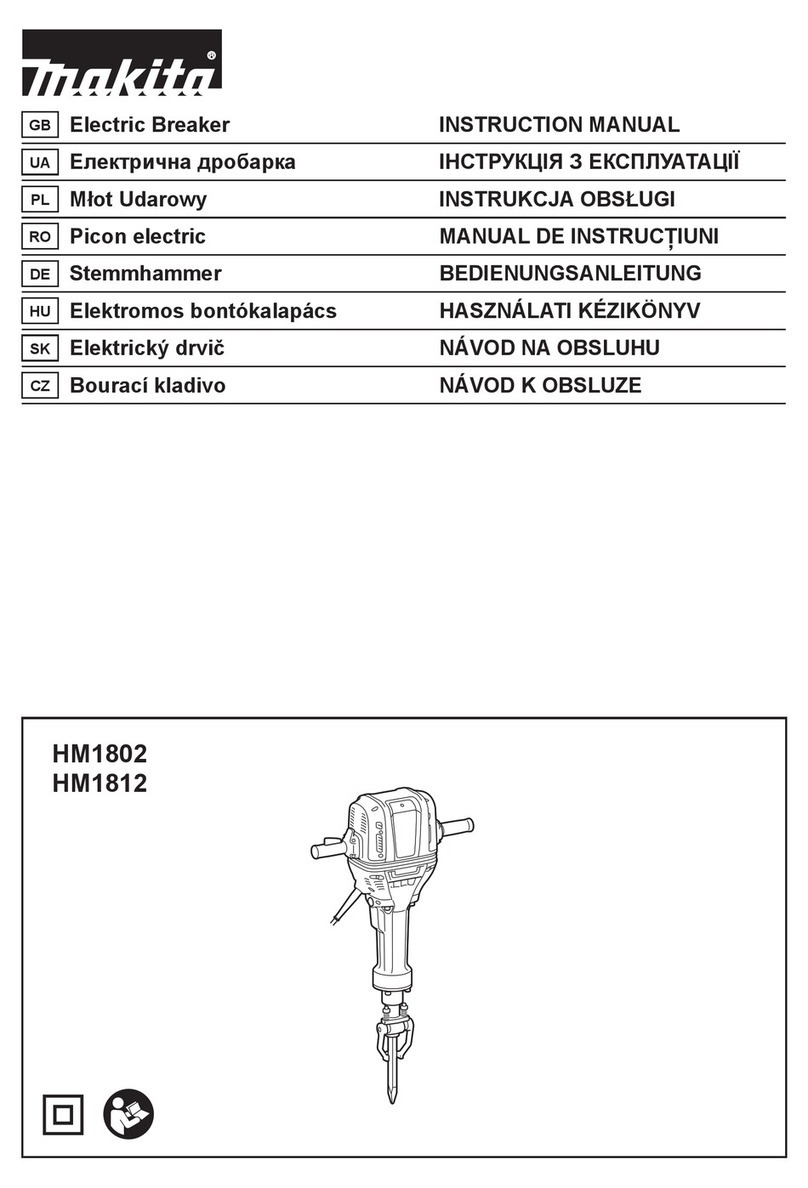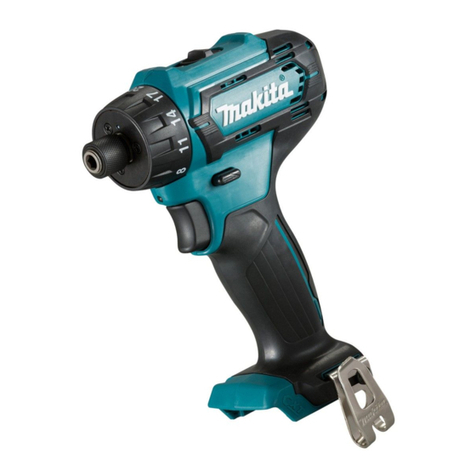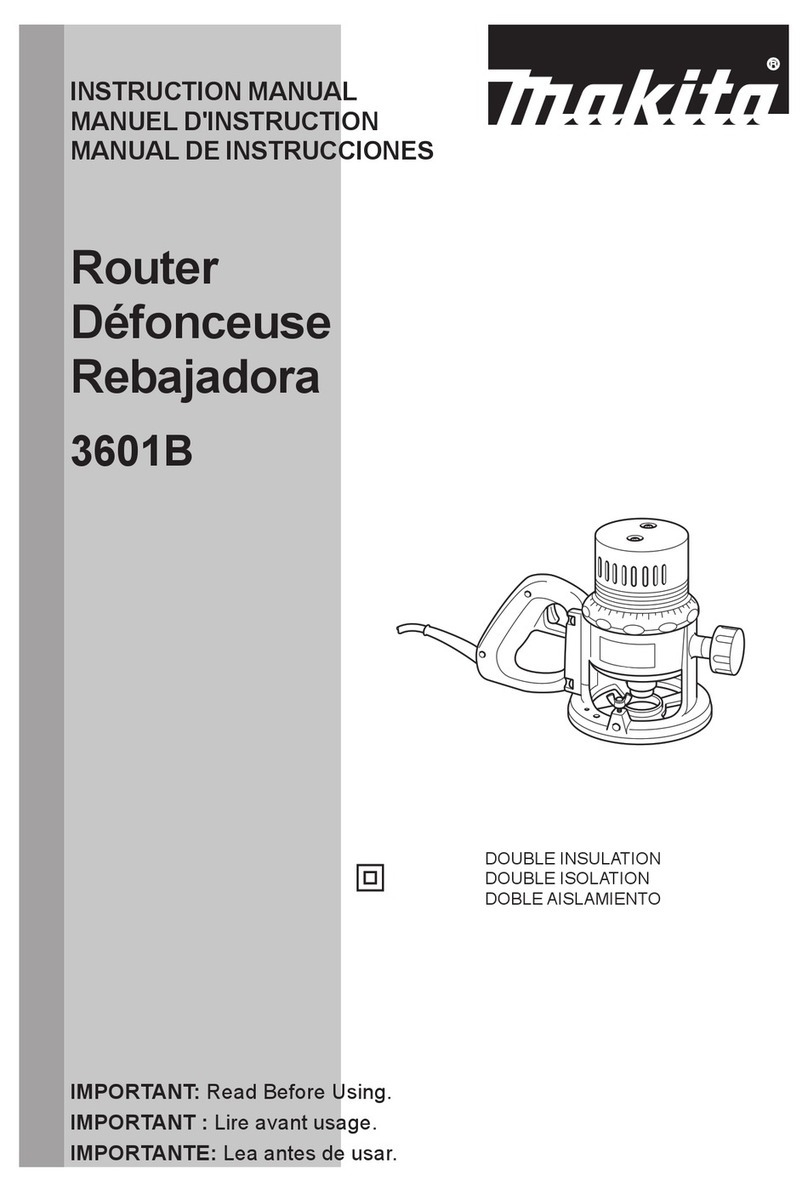7
CAUTION:
• The speed adjusting dial can be turned only as far as 5
and back to 1. Do not force it past 5 or 1, or the speed
adjusting function may no longer work.
ASSEMBLY
CAUTION:
• Always be sure that the tool is switched off and
unplugged before carrying out any work on the tool.
Installing or removing saw blade (Fig. 4 & 5)
CAUTION:
• Always clean out all chips or foreign matter adhering to
the blade and/or blade holder. Failure to do so may
cause insufficient tightening of the blade, resulting in a
serious personal injury.
• Do not touch the blade or the workpiece immediately
after operation; they may be extremely hot and could
burn your skin.
• Use only B type blades. Using blades other than B type
blades causes insufficient tightening of the blade,
resulting in a serious personal injury.
• When you remove the saw blade, be careful not to hurt
your fingers with the top of the blade or the tips of work-
piece.
Before installing the blade, make sure that the blade
clamp lever is in the released position.
To install the blade, insert the blade (teeth facing forward)
into the blade holder until it latches. The lever moves to
the fixed position by itself and the blade is locked. Pull
the blade lightly to make sure that the blade does not fall
off during operation.
CAUTION:
• If the lever does not move to the fixed position by itself,
the blade is not installed completely. Do not press the
lever by hand to the fixed position. It may damage the
tool. Make sure that the back edge of the blade fits into
the roller.
To remove the blade, push the lever forward as far as it
will go. This allows the blade to be released.
Hex wrench storage (Fig. 6)
When not in use, store the hex wrench as shown in the
figure to keep it from being lost.
OPERATION
CAUTION:
• Always hold the base flush with the workpiece. Failure
to do so may cause blade breakage, resulting in a seri-
ous injury.
• Advance the tool very slowly when cutting curves or
scrolling. Forcing the tool may cause a slanted cutting
surface and blade breakage.
• Hold the tool firmly with one hand on the main handle
when performing the tool. If necessary, the front part of
the tool may be supported by the other hand.
Turn the tool on without the blade making any contact
and wait until the blade attains full speed. (Fig. 7)
Then rest the base flat on the workpiece and gently move
the tool forward along the previously marked cutting line.
Bevel cutting (Fig. 8, 9 & 10)
CAUTION:
• Always be sure that the tool is switched off and
unplugged before tilting the tool base.
With the base tilted, you can make bevel cuts at any
angle between 0° and 45° (left or right).
Loosen the bolt on the back of the base with the hex
wrench. Move the base so that the bolt is positioned in
the center of the cross-shaped slot in the base.
Tilt the base until the desired bevel angle is obtained.
The edge of the housing indicates the bevel angle by
graduations. Then tighten the bolt to secure the base.
Front flush cuts (Fig. 11)
Loosen the bolt on the back of the tool base with the hex
wrench, and slide the base all the way back. Then tighten
the bolt to secure the tool base.
Cutouts
Cutouts can be made with either of two methods A or B.
A) Boring a starting hole
For internal cutouts without a lead-in cut from an
edge, pre-drill a starting hole 12 mm or more in diam-
eter. Insert the blade into this hole to start your cut.
(Fig. 12)
B) Plunge cutting
You need not bore a starting hole or make a lead-in
cut if you carefully do as follows.
1. Tilt the tool up on the front edge of the base with
the blade point positioned just above the work-
piece surface. (Fig. 13)
2. Apply pressure to the tool so that the front edge of
the base will not move when you switch on the tool
and gently lower the back end of the tool slowly.
3. As the blade pierces the workpiece, slowly lower
the base of the tool down onto the workpiece sur-
face.
4. Complete the cut in the normal manner.
Finishing edges (Fig. 14)
To trim edges or make dimensional adjustments, run the
blade lightly along the cut edges.
Metal cutting
Always use a suitable coolant (cutting oil) when cutting
metal. Failure to do so will cause significant blade wear.
The underside of the workpiece can be greased instead
of using a coolant.
Dust extraction (Fig.15)
Clean cutting operations can be performed by connect-
ing this tool to a Makita vacuum cleaner. Insert the hose
of the vacuum cleaner into the hole at the rear of the tool.
Rip fence (Optional accessory)
CAUTION:
• Always be sure that the tool is switched off and
unplugged before installing or removing accessories.
1) Straight cuts (Fig. 16 & 17)
When repeatedly cutting widths of 160 mm or less,
use of the rip fence will assure fast, clean, straight
cuts.
To install, insert the rip fence into the rectangular
hole on the side of the base with the fence guide fac-
ing down. Slide the rip fence to the desired cutting
width position, then tighten the bolt to secure it.
